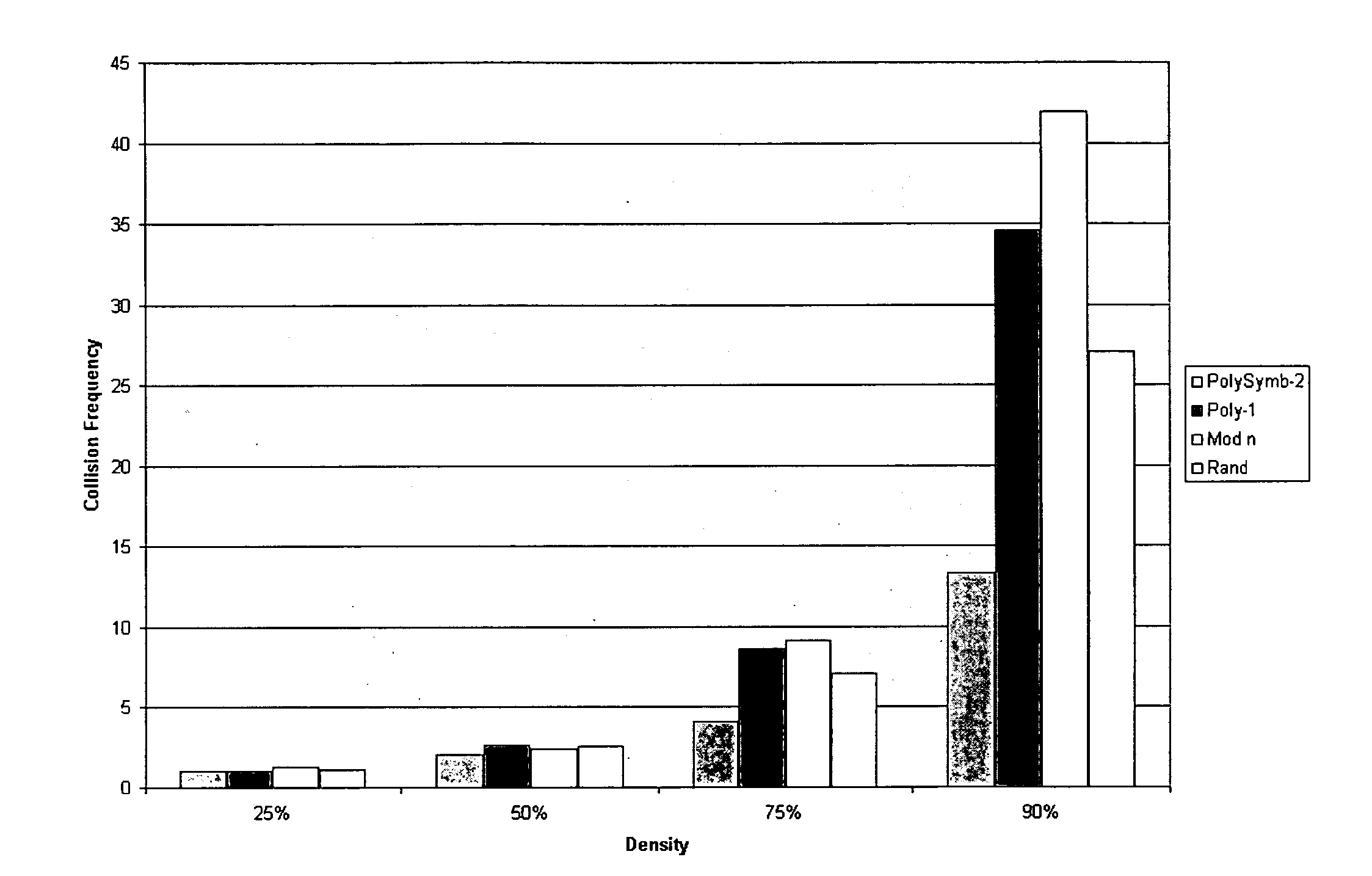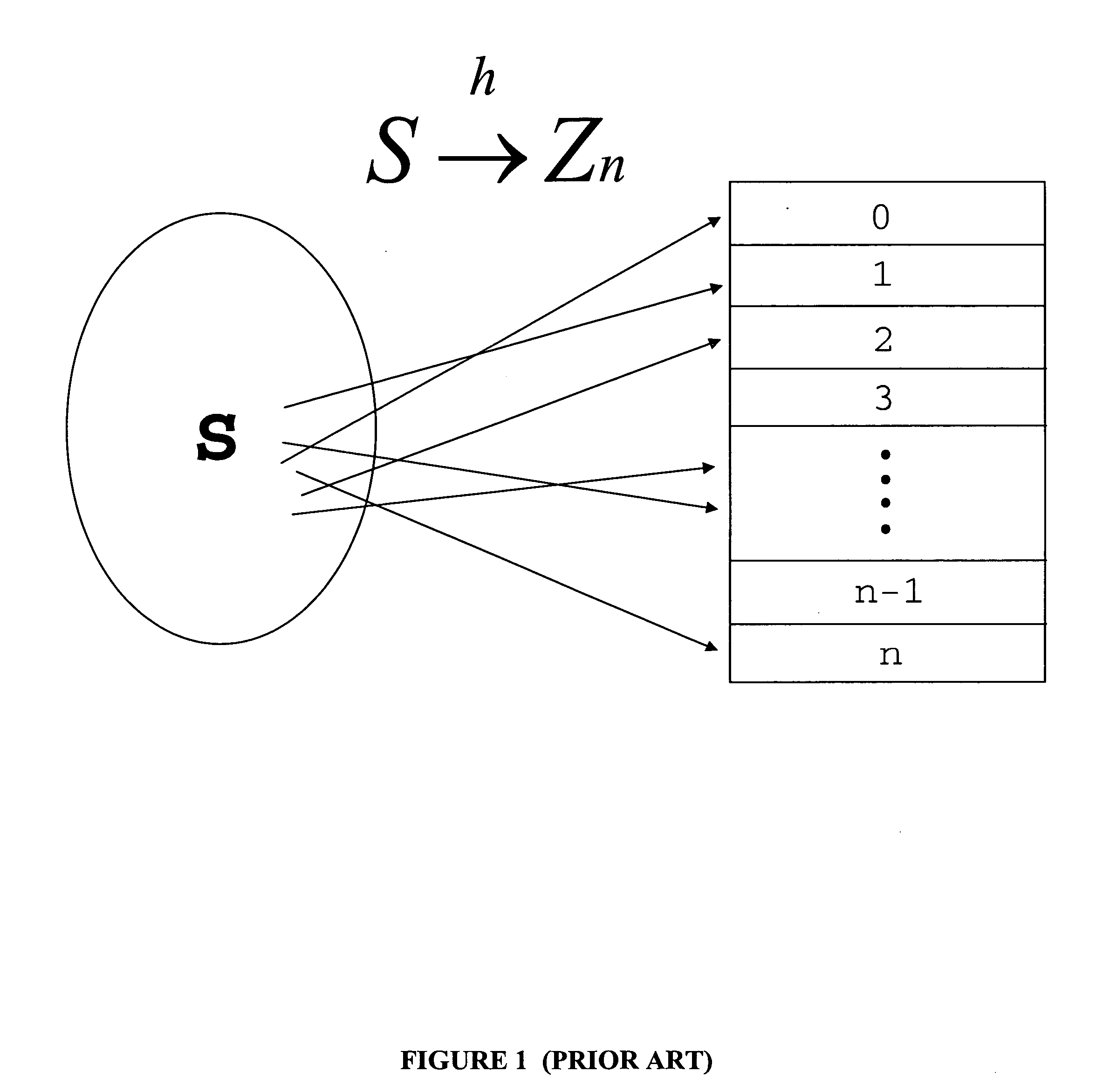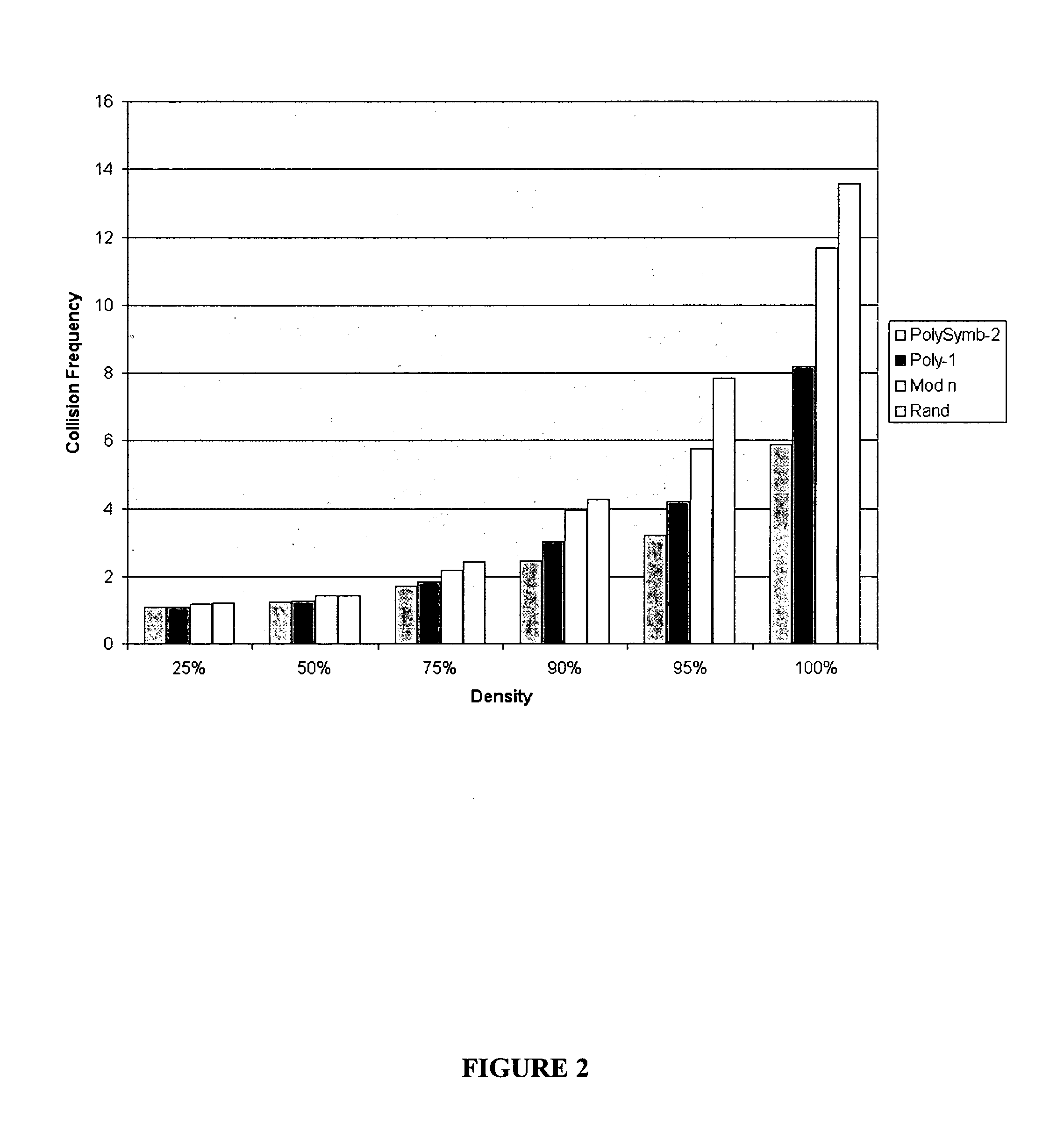Data storage method and apparatus utilizing evolution and hashing
- Summary
- Abstract
- Description
- Claims
- Application Information
AI Technical Summary
Benefits of technology
Problems solved by technology
Method used
Image
Examples
first embodiment
of the Invention
[0047] The pseudocode in Table 2 outlines the invention in greater detail. Note that the most expensive computation (marked with a *) is calculating the number of collisions for each polynomials, which involves rehashing all of the data. Note that this step has to be performed O(num_iter*num_pop) times. But as will become apparent later, this non-deterministic method has a fast rate of convergence because it utilizes non-traditional techniques.
TABLE 2Outline of the inventionvoid evolvePoly( ) {polynomial pop[num_pop]; / / population to evolvefor( int i=0; i / / for each iterationfor( int j=0; j / / for each polynomial(*)pop[j].col = calc_col(pop[j]); / / calculate collisionssort( pop, pop.col ); / / sort polynomials based on collisionsmutate_poly( pop ); / / mutates the middle 60% of polynomialsreplace_poly( pop ); / / replaces bottom 20% of polynomials}
[0048] A similar algorithm was used for evolving two “mated” polynomials; the only difference being that the polynomials were pai...
second embodiment
of the Invention
[0066] Another embodiment is to implement this method on a distributed system. In its current implementation, determination of efficiency requires that the data be hashed by each function under examination. Herein lies the greatest computational expense of this algorithm, and a distributed implementation would allow this burden to be spread over the entire network with minimal run-time data transfer—the only network usage would be the transfer of specific polynomial coefficients and the return of a collision number. Two metaphors for evolution over a distributed network present themselves. First is that of each client representing a single creature; the second is that of each computer as a distinct environment, each performing the evolution in parallel with minimal interaction of populations.
PUM
 Login to View More
Login to View More Abstract
Description
Claims
Application Information
 Login to View More
Login to View More - R&D
- Intellectual Property
- Life Sciences
- Materials
- Tech Scout
- Unparalleled Data Quality
- Higher Quality Content
- 60% Fewer Hallucinations
Browse by: Latest US Patents, China's latest patents, Technical Efficacy Thesaurus, Application Domain, Technology Topic, Popular Technical Reports.
© 2025 PatSnap. All rights reserved.Legal|Privacy policy|Modern Slavery Act Transparency Statement|Sitemap|About US| Contact US: help@patsnap.com



